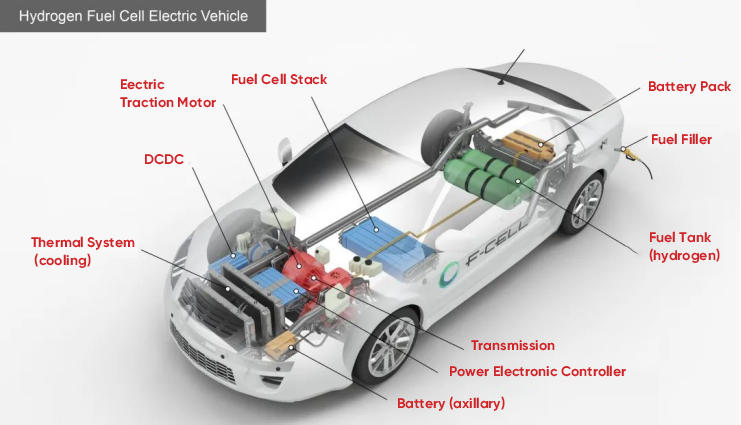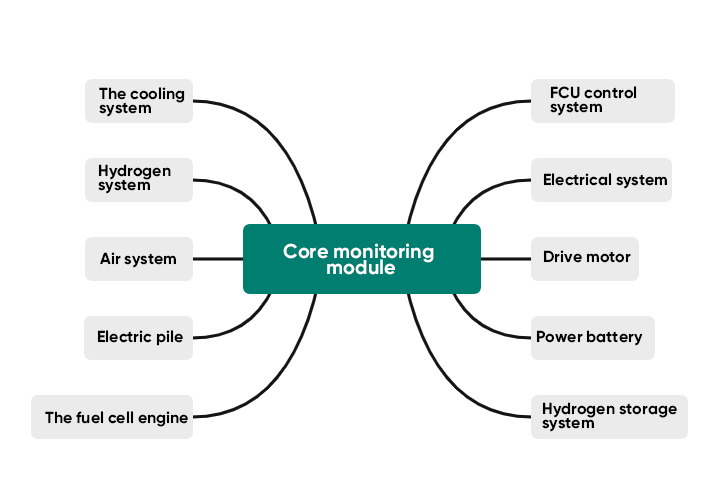Under the background of global "carbon neutralization" and "carbon peak", China, the world's largest single automobile sales market, as an alternative to traditional fuel vehicles - new energy automobiles, is developing in full swing with the triple resonance of government, market and enterprise. However, with the constant adjustment and weakening of national and local subsidies and preferential policies for pure electric vehicles, the wind as a "vent" for capital pursuit is also weakening. At the same time, from the policy point of view, while focusing on the development of pure electric vehicles, China has also been focusing on the development of hydrogen fuel cell vehicles, one of the two major technology paths of new energy vehicles:
◆ In 2016, China issued the Road Map for Energy Saving and New Energy Automotive Technology, proposed the road map for the development of China's hydrogen energy industry, and planned the targets for the development of hydrogen fuel cell automobiles and the construction of hydrogen stations;
◆Made in China 2025 also explicitly proposed the development plan of hydrogen fuel cell automobiles, which promoted the development of hydrogen fuel cell automobiles to a strategic height;
◆ In December 2019, the Ministry of Industry and Information released the "New Energy Automotive Industry Development Plan (2021-2035)" (soliciting comments draft) to define the scope of new energy vehicles: including pure electric vehicles, plug-in hybrid vehicles, hydrogen fuel cell vehicles, hydrogen fuel cell vehicles are still one of the key industries supported by the state;
◆ Recently, more than 10 provinces and municipalities have issued local policies and more than 50 prefecture-level municipalities have issued plans for the hydrogen energy industry to strongly support the development of the hydrogen fuel cell automobile industry.
Therefore, under the guidance of a series of national and local industrial policies, the transformation and upgrading of the domestic automotive industry, and the requirement of overtaking in curves, the continuous development of the domestic hydrogen energy industry, the hydrogen fuel cell vehicle, as the most important part of the downstream integration application of the hydrogen energy industry chain, has received wide attention.
Hydrogen fuel cells are devices that generate energy from the chemical reaction of hydrogen with oxygen. The driving force of a hydrogen fuel cell vehicle comes from the motor of the vehicle, just like a pure electric vehicle. Fuel cells require constant addition of fuel to generate electricity, most commonly hydrogen.

Body Structure Diagram
Main components of hydrogen fuel cell vehicle:
Thermal management (cooling system): The system maintains fuel cells, electronics, power electronics, and other components at the appropriate operating temperature.
Air compressor to provide the system with air that meets the pressure requirements.
Hydrogen storage system: Provides automotive high pressure hydrogen supply system.
Fuel cell stack, an electrical energy conversion device assembled from multiple fuel cells.
Power batteries, providing power continuity and power recycling battery packs.
Drive the motor, using the power from the fuel cell and power battery pack, to output mechanical energy to drive, while satisfying the deceleration kinetic energy recovery, to convert into electrical energy.
A gearbox that transmits mechanical power from the motor to drive the wheels.
DC/DC, DC Boost Converter
A power electronic controller that manages the power of fuel cells and power batteries, performs voltage control, and distributes power to motor-controlled motors
The Sirun Hydrogen Fuel Integrated Monitoring Platform has data collection on vehicle status, power batteries, hydrogenation/hydrogen use, and the ability to predict and analyze vehicle failure, fuel cell use, vehicle hydrogen power mileage, 100 kilometers of hydrogen consumption and hydrogen fuel cell life.
Main functions of the Hydrogen Fuel Integrated Regulatory Platform:
Vehicle Status Monitoring
Monitor vehicle status, vehicle online is all the data items needed to collect for real-time monitoring of a hydrogen fuel cell
 Fault Management
Fault Management
Faults are categorized by module and level. Fault data can be queried, historical data can be exported, and fault information can be flexibly defined according to the type of vehicle.
Basic Information Maintenance
Maintenance of T-BOX information, vehicle basic information (vehicle type, use, etc.), equipment manufacturer information
Statistical Report
Vehicle mileage statistics, fuel cell usage time analysis, fuel cell start-stop number statistics, failure statistics, vehicle 100 km hydrogen consumption analysis, 100 km hydrogen consumption analysis, cumulative carbon reduction
Big Data Analysis
Life prediction of hydrogen fuel cells; Fault data analysis, targeted fault analysis based on different types of vehicles, parts, fault scent
System Management
Has vehicle management, user management, role rights management

 京公网安备 11010602103187号
京公网安备 11010602103187号


